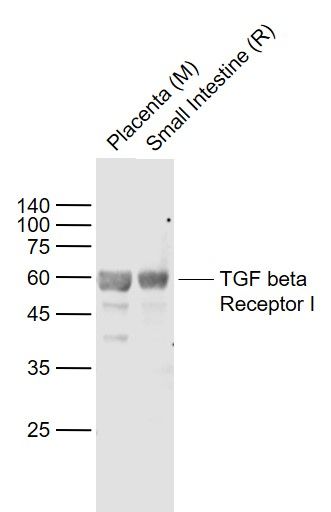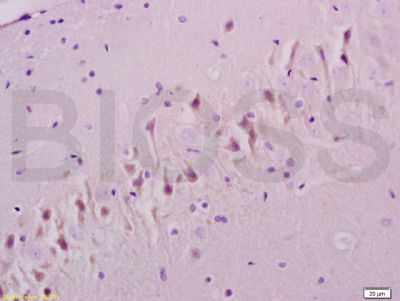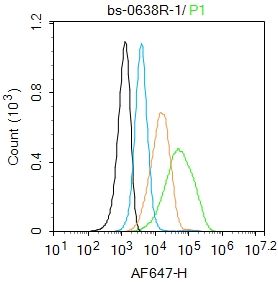Specific References (5) | SL0638R has been referenced in 5 publications.
[IF=3.37] Xie, Weihan, et al. "Regulation of cellular behaviors of fibroblasts related to wound healing by sol‐gel derived bioactive glass particles." Journal of Biomedical Materials Research Part A (2016). WB ; Human.
[IF=1.37] Yang, Xiao, et al. "Effect of Iodine Excess on Th1, Th2, Th17, and Treg Cell Subpopulations in the Thyroid of NOD. H-2h4 Mice." Biological Trace Element Research (2014): 1-9. IHSLCP ; Mouse.
[IF=3.411] Yan Zheng. et al. Downregulation of Rap1GAP Expression Activates the TGF-β/Smad3 Pathway to Inhibit the Expression of Sodium/Iodine Transporter in Papillary Thyroid Carcinoma Cells. Biomed Res Int. 2021;2021:6168642 WB,IF ; Human.
[IF=5.008] Cashman et al. SENP5 mediates breast cancer invasion via a TGFβRI SUMOylation cascade. (2014) Oncotarge. 5:1071-82 WB,IF(ICC) ; Human.
[IF=1.21] Tang, K., et al. "GDF9 affects the development and tight junction functions of immature bovine Sertoli cells." Reproduction in Domestic Animals (2017). WB ; Bovine.


